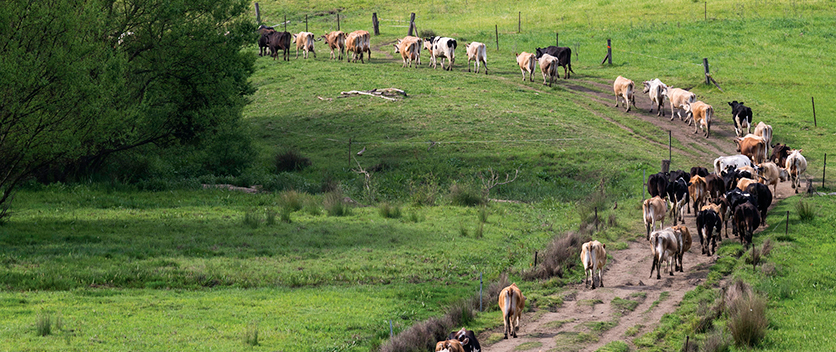Travelling stock reserves
The grazing industry uses a network of Crown reserves called travelling stock reserves (TSR) for moving or grazing livestock around the state. This Crown land is reserved for all forms of livestock to rest or graze. Overnight resting of livestock is integral to the movement of stock on stock routes over long distances.
There are currently more than 6,500 TSRs on Crown land in NSW, covering an area of approximately 2 million hectares. Almost 1.5 million hectares, or 75% of the TSR network, is in the western division of NSW.
Local Land Services cares for, controls and manages about 500,000 hectares of TSR land, concentrated mainly in the central and eastern divisions. The TSRs in the western division are generally covered by western lands leases and as a result, leaseholders manage the care and control of the western TSRs.
The reserves in the western division can only be used for travelling stock. You must have a stock movement permit to use these TSRs. Contact Local Lands Services for the permit beforehand. These reserves are not open for public access, so they cannot be used for recreation.
Graziers can use TSRs in the eastern and central divisions during times of drought, bushfire and flood as supplementary grazing areas or for apiary sites. You will also need a permit from the Local Land Services for these activities. Members of the public can also use TSRs in the eastern and central divisions for recreation between sunrise and sunset and for other uses such as conservation.
Find out more about:
- Local Land Services management of TSRs
- the key requirements for using a TSR.
The importance of travelling stock reserves
The TSR network was established more than 150 years ago to allow livestock to move to and from markets. It is believed that many of these routes followed pathways used traditionally by Aboriginal people to travel across country. Many are next to or follow tracks and rivers.
While TSRs are still important for travelling and grazing stock, they are also widely recognised for playing a key role in landscape connectivity and biodiversity conservation across NSW. This is because they form corridors of Crown land between other landholdings. However, in the western division the TSRs form part of the existing leasehold land and are managed in the same way as the rest of the land. They are not fenced, are grazed in the same way as the surrounding land and are difficult to distinguish physically on the ground.
The agricultural and economic value of TSRs is important to agricultural industries and communities, particularly in times of extreme weather and other emergencies. TSRs that do not overlay western lands leases are also highly valued as important access points for recreational fishing and other social and recreational activities.
Travelling Stock Reserves Review
TSRs are important and valuable public assets used by the people of NSW for various social, environmental, community and economic activities. The NSW Government is committed to maintaining a viable and connected TSR network so that drovers, landholders and community groups in the state will continue to benefit from their use.
The Crown Lands Management Review conducted by the NSW Government from June 2012 found that many TSRs in NSW were no longer used for their original purpose. The NSW Travelling Stock Reserves Review (the TSR Review) began in April 2017 to build on these findings and Local Land Services’ NSW Travelling Stock Reserves State Planning Framework 2016–21.
The TSR Review was conducted in close consultation with the community, partners and stakeholder groups with the aim of ensuring a useful and viable TSR network for the future. It involved public consultation, targeted consultations in 3 local government areas and a state-wide assessment of TSRs.
Response to the review
The main aim of the TSR review was to determine which TSRs are still used or needed for their original purpose, and which TSRs are important for other reasons.
Response to the review of the NSW travelling stock reserve network (PDF, 8.5 MB) presents the TSR Review’s general findings. It also details the NSW Government’s response to these findings, with the aim of ensuring the NSW TSR network is managed effectively for the benefit of the NSW community.
Travelling Stock Reserves Dealings Policy
The NSW Government developed the Travelling Stock Reserves Dealings Policy (PDF, 426 KB) as a key commitment of its response to the TSR review. The policy guides site-specific dealings (leases, licences and sales), agreements and other activities on TSRs.
The policy ensures that connectivity of access to the active TSR network will be protected and remain viable and well-maintained, to support multiple purposes for the benefit of drovers, businesses, landholders and the community.
The Travelling Stock Reserves Dealings Procedure (PDF, 698 KB) outlines how the department and Local Land Services apply the policy and assess the effects of dealings, agreements and activities on the active TSR network to decide on acceptable uses of TSR land.
